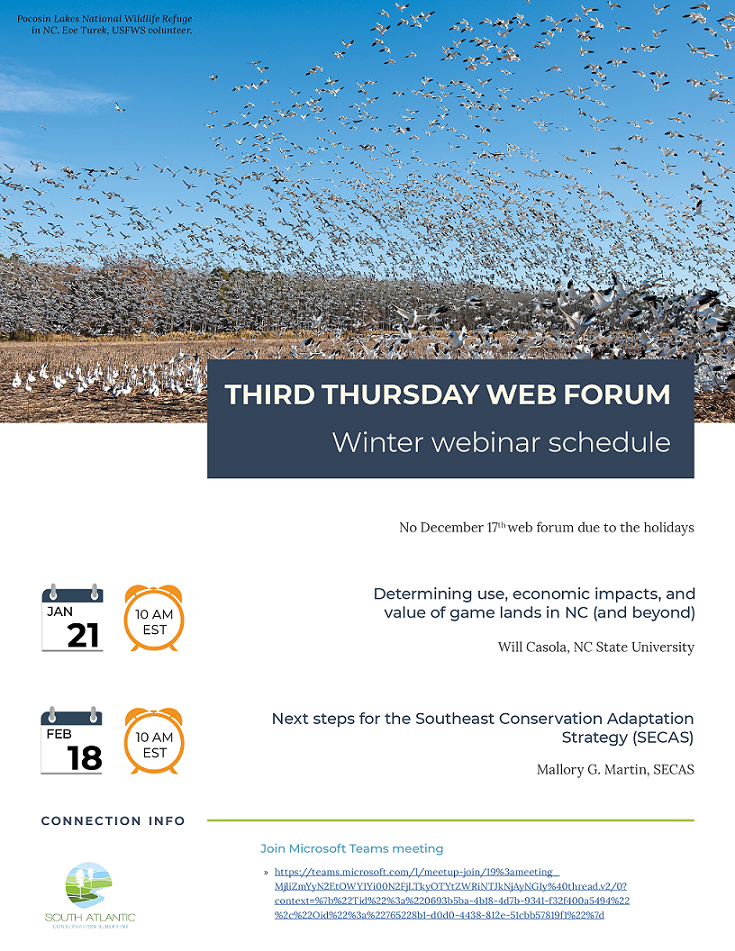Two upcoming webinars - Evaluating the economics of game lands and results of the SECAS Futures project

Two upcoming webinars hosted by the South Atlantic Blueprint team as part of the Third Thursday Web Forum series may be of interest to the SECAS community.
Determining use, economic impacts, and value of game lands in NC (and beyond)
Will Casola, NC State University
January 21st, 10 am Eastern time
America’s parks and protected areas, including game lands, wildlife refuges and wildlife management areas, receive over two billion visitor days each year. With such high use, it is important to understand the environmental, social and economic impacts associated with these properties. From an economic perspective, these spaces provide benefits through the market impacts of visitors and via the non-market value to locals who benefit from recreational opportunities, aesthetics and ecosystem services. By quantifying overall use, the market contribution of these properties to local economies, and the non-market value to residents, management agencies and local governments can achieve economic, conservation and recreational goals. As North Carolina urbanizes, protecting greenspace, such as game lands, reduces the overall acreage of taxed land but can strengthen the local tax base by increasing the property value of nearby properties and by the economic activity associated with game land users. Understanding this dynamic will be critical in the next several decades as many parts of the southeast face urbanization. By carefully considering the non-market values of these properties, we can facilitate comparison of their costs and benefits, as well as highlight instances where they are currently an underutilized source of economic growth. Finally, estimating the value of public green space requires estimating use, which also improves our understanding of how multiple groups use public green space.
Starting this fall, this project is being expanded from North Carolina to the entire Southeast.
Next steps for the Southeast Conservation Adaptation Strategy
Mallory Martin, SECAS
Shawn Johnson, University of Montana
February 18th, 10 am Eastern time
SECAS recently completed a formal assessment of the status of the partnership, including an evaluation of its governance structure and delivery of value to partners. For more information on this SECAS Futures project, refer to Mallory’s blogs from this month and last February, as well as Kathryn Jewell’s post from July of last year. Mallory and Shawn will present the approach and findings of the assessment and outline a strategy for implementing the project’s recommendations in support of the SECAS vision and goal.
Join Microsoft Teams meeting: https://teams.microsoft.com/l/meetup-join/19%3ameeting_MjliZmYyN2EtOWY1Yi00N2FjLTkyOTYtZWRiNTJkNjAyNGIy%40thread.v2/0?context=%7b%22Tid%22%3a%220693b5ba-4b18-4d7b-9341-f32f400a5494%22%2c%22Oid%22%3a%22765228b1-d0d0-4438-812e-51cbb57819f1%22%7d